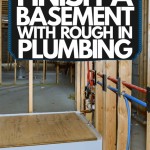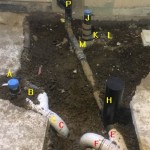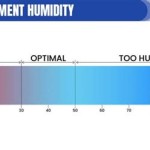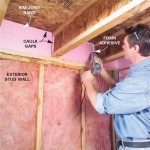How to Effectively Reduce Radon Levels in Your Basement
Radon is a naturally occurring radioactive gas that can accumulate in indoor spaces, posing a significant health risk. Basements, due to their enclosed nature and proximity to the ground, are particularly susceptible to radon infiltration. It is essential to address radon levels in your basement to ensure a healthy living environment.
1. Test for Radon
The first step is to determine the radon level in your basement. You can purchase a radon test kit from hardware stores or online and follow the instructions to collect a sample. Radon levels above 4 picocuries per liter (pCi/L) are considered elevated and require mitigation.
2. Seal Cracks and Openings
Radon enters basements through cracks and openings in the foundation, walls, and floor. Inspect your basement carefully for any gaps or cracks and seal them using caulk, expanding foam, or a radon-specific sealant. Pay special attention to areas where pipes, wires, or vents enter the basement.
3. Install a Radon Mitigation System
If sealing cracks and openings is insufficient to reduce radon levels, a radon mitigation system may be necessary. This involves installing a perforated pipe that extends from the basement floor through the house and exhausts radon gas outside. A fan connected to the pipe creates a vacuum that draws radon from the basement.
4. Ventilate Your Basement
Proper ventilation can help dilute radon levels in your basement. Install an exhaust fan in the basement to draw fresh air from outside and expel radon gas. Open windows when weather permits to increase airflow and reduce radon accumulation.
5. Use a Dehumidifier
Radon gas tends to adhere to moisture in the air. By reducing humidity levels in your basement, you can make it less hospitable for radon. Use a dehumidifier to maintain a relative humidity of around 30-40%.
6. Monitor Radon Levels
Once you have taken steps to reduce radon levels, it is important to monitor your basement regularly to ensure that the mitigation efforts are effective. Place a radon monitor in the lowest area of your basement and follow the manufacturer's instructions to check radon levels periodically.
7. Professional Assistance
If you are unable to reduce radon levels in your basement effectively on your own, it is recommended to consult a professional radon mitigation specialist. They can provide a comprehensive assessment of your basement, identify the sources of radon infiltration, and design a customized mitigation system to meet your specific needs.
By following these steps, you can effectively reduce radon levels in your basement and create a safer and healthier living environment for yourself and your family.

Reducing Radon In Your Home National Program Services

What Kind Of Radon Reduction System Is Best Trinity Electrical Services Inc

Radon Mitigation So You Have Now What

Radon In The Home Mass Gov

Do I Really Need Radon Mitigation Utah Services

Preventing Radon Problems In The Home 9 953 Extension

Reduce Radon Levels In Your Home Storymd

Radon Levels In New York Contractor Tests Syracuse Binghamton Utica

Radon Resistant New Construction Information For If You Are Having Your Home Built

Radon In Your Home Ottawa Public Health
See Also








